America’s Biggest Free Pet Adoption Event
An adoption event funded by Maddie’s Fund® and set for June 1-2 will be the first of its kind in the nation, offering free adoptions of an estimated 5,000 dogs and cats in eight communities across the U.S.
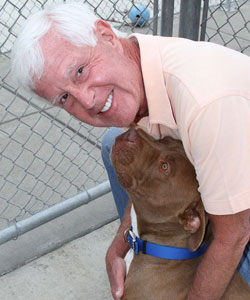
The participating metro areas are:
New York City
Washoe County, Nevada
Dane County, Wisc.
Alachua County, Fla.
Santa Clara County, Calif.
Alameda County, Calif.
Contra Costa County, Calif.
San Francisco County, Calif.
The goal of Maddie’s® Pet Adoption Days is to give all healthy, senior and treatable shelter dogs and cats a second chance. As in past years when the event has been held in the San Francisco Bay area, adoptions of dogs and cats will be free to qualified adopters. In return, Maddie’s Fund has set aside $4 million so that it can give each shelter or rescue group $500 – $2,000 per adoption.
Maddie’s® Pet Adoption Days is being held to increase awareness of shelter animals and their need for loving homes, and to shed light on the tireless efforts of the shelters and rescue organizations across the country that work so hard to save the lives of countless dogs and cats every day. The adoption event honors the memory of the foundation’s namesake, a Miniature Schnauzer named Maddie. To learn more about the event visit:Adopt.maddiesfund.org
Maddie’s Fund will pay organizations $500 per regular adoption, $1,000 for each adoption involving a dog or cat who is seven years of age or older or who has been treated for one or more medical conditions and $2,000 for each adoption involving a dog or cat who is seven years of age or older and who has been treated for one or more medical conditions.
Maddie’s Fund® is a family foundation endowed by the founder of Workday® and PeopleSoft, Dave Duffield and his wife, Cheryl. The goal of Maddie’s Fund is to achieve no-kill nation by providing solutions to the most challenging issues facing the animal welfare community. Maddie’s Fund is named after the family’s beloved Miniature Schnauzer who passed away in 1997.
Caption: Dave Duffield, founder of Maddie’s Fund, has donated more than $300 million to animal rescue.
Petco Removing All Dog and Cat Treats Made in China From Store Shelves

No proof has been found to conclusively link jerky to the pet illnesses. Most of the jerky was produced in China.
Chinese-made dog and cat treats will disappear from Petco’s 1,300 stores, its website and Unleashed by Petco locations over the coming months.
“We know some pet parents are wary of dog and cat treats made in China, especially chicken jerky products, and we’ve heard their concerns,” says Petco CEO Jim Myers.
“Very simply, we feel this decision is in the best interest of the pets we all love and, ultimately, for our business,” he adds.
The FDA investigation and the agency’s latest update spurred Petco to act.
“We’ve been following the FDA warnings and related customer concerns closely, and we’ve been actively reducing our China-made assortment and expanding our American-made offerings for several years now,” Myers says. “We know the FDA hasn’t yet identified a direct cause for the reported illnesses, but we decided the uncertainty of the situation outweighs the lack of actual proof.
“It has taken some time and careful thought to get to this point, but we’re proud to make the change and we believe our customers will be pleased with it as well.”
Among the brands Petco is touting as alternatives to Chinese-made treats are selections from U.S. companies such as American Jerky, Blue Buffalo, Canidae, Dogswell, Merrick, Nature’s Variety and Zuke’s as well as treats and chews from New Zealand, Australia and South America.
Top 10 Reasons Your Dog is Taking a Trip to the Vet
Unlike a doctor’s office that may be filled with whatever cold or flu is going around, a vet’s office may lack the sense of camaraderie that a room full of sniffling humans can provide. While there are a multitude of reasons that can bring your dog to the vet, your pet’s fellow patients might have more common than you think.
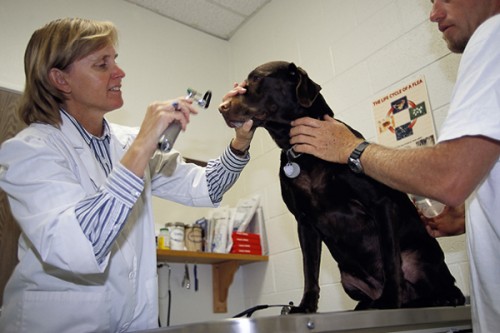
Veterinary Pet Insurance analyzed data from 500,000 insured cats and dogs over the previous year to find the top 10 medical conditions leading to a visit with a veterinarian.
The most common conditions in dogs:
Skin Allergies
Ear Infection
Chronic Kidney Disease
Skin Infection
Arthritis
Upset Stomach/Vomiting
Intestinal Upset/Diarrhea
Periodontitis/Dental Disease
Bladder or Urinary Tract Disease
Soft Tissue Trauma (Bruise or Contusion)
Is your dog plagued by itchy skin? VPI had more than 77,000 claims for dog skin allergies, with an average cost of $187 per dog and topped the chart as the most common reason for vet visits.
“To prevent some of the discomfort that so many pets experience from common diseases, the place to start would be by checking them regularly for developing problems,” says Carol McConnell, DVM, MBA, vice president and chief veterinary medical officer for VPI. “Many of the conditions on our Top 10 list each year can be stopped early or successfully managed in partnership with a veterinarian.”
VPI urges pet owners to familiarize themselves with their pets’ routine and behavior and schedule regular semiannual veterinary examinations to help prevent and identify medical conditions before they become serious or costly.
Can Dogs Experience Jealousy?
Anyone who thinks dogs can’t feel jealousy has never met my dog. My French Bulldog, Huggs, is very well-behaved. Trained as therapy dog, he is quiet and low-key, that is until you are not paying “enough” attention to him. He is well known in the family for wanting something anytime you are doing anything else. Whether that means climbing onto your newspaper or casually leaning backwards across your lap so you can’t possibly use your laptop, making dolphin-esque noises when you stop touching him, or squeezing himself between my husband and I, he is either extraordinarily jealous, or the biggest attention-whore known to dog-kind, or both. I’ll go with both.
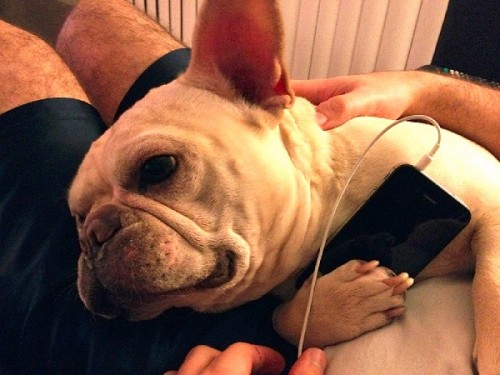
As a kid we had Simon the Lhasa Apso who was happy as can be until we introduced our second dog, a Shih Tzunamed Wally. When Simon wasn’t hiding under the bed in protest, he took to stealing things from the bedrooms and would run by tossing it in the air so everyone would come after it and away from whatever adorable thing Wally was doing. Was he jealous? If he was a kid, we probably would have sat down with him and told him that we loved him and his new brother equally and they get the same amount of attention. But if you are a first born child, you probably felt what Simon felt: that it simply wasn’t true (did I mention I’m the baby of my family?)
I actually had this discussion about dogs and jealousy with my family just the other day. The common consensus was that jealousy is a complex emotion and therefore reserved for human feeling (and squabbling,) not something dogs would concern themselves with. But a new study from PLOS ONE, might make you rethink how dogs think.
Adapting a test that has been used to determine jealous behavior in human infants, Psychologists from the University of California, San Diego researchers were able to determine that dogs do in fact feel jealous.
Researchers videotaped 36 small breed dogs reacting to their owners ignoring them and instead displaying affection to an animated, stuffed dog that barked, whined and wagged its tail. During these interactions with the plush pet, over three-quarters of the real dogs pushed or touched their owners. The dogs also made attempts to get in between the stuffed animal and the owners, or went as far as to growl at the imposter.
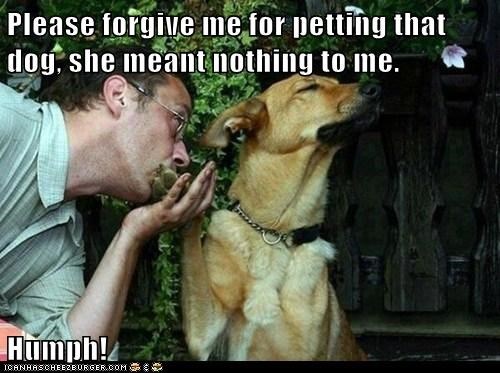
The findings mirror those of studies of 6-month-old babies who had jealous reaction to their moms interacting with a doll, but were less concerned about moms interacting with a book.
Psychologist Christine Harris, who led the study, says she’s been studying jealousy for many years — but in humans.
So what does she think of the dogs?
The fact that these dogs seemed like they were trying to draw their owners away from the stuffed animal indicates that they’re feeling something very similar to human jealousy, Harris says.
But in the end (as convincing as it seems) the study still doesn’t prove that dogs feel jealousy. “The problem is that [the researchers] didn’t look at how dogs would react just to those objects,” Laurie Santos , director of the Canine Cognition Center at Yale University tells NPR. Jealousy is a complex emotion. If we find out that dogs feel the same way, “either jealousy is less complicated because animals show it, or animals are more complicated than we thought.”
While the study might not be conclusive, there is no doubt that whether your call it jealousy, fear or sadness, dogs feel something when someone or something gets in the way of the love and attention they deserve. This site is filled with information helping dogs to adjust to life changes and additions of new family members, be it human, dog or other. Just like with humans, some dogs are likely to feel the pull of emotions greater than others.
Parvo Outbreak Plagues Los Angeles County
In a dog health crisis that hits near to home for this dog writer, I encourage everyone to read this and pass it along to any dog owner’s and lovers you know in the LA area.
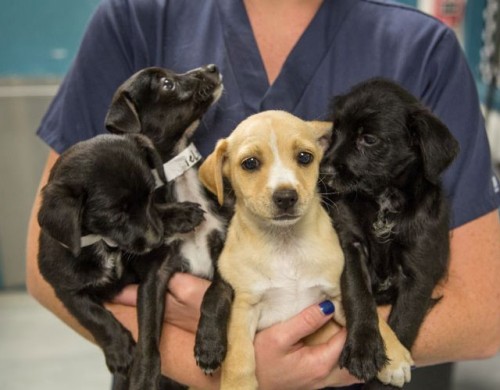
Vaccination Timelines for Dogs and Puppies>>
Although the disease is most commonly seen in young puppies, Parvovirus can affect unvaccinated dogs of any age. All county residents are urged to keep puppies and dogs safe by not letting them outside of your fenced yard until they have received their vaccinations and are protected from the virus.
“In springtime, you get a lot of newborns during that time and there’s an increase in susceptible hosts,” Maria Sabio-Solacito, the head veterinarian for animal care and control tells LATimes.
Parvo does not affect humans, but is highly contagious and deadly among dogs. The resilient virus is shed through bodily fluids can survive for months or years on surfaces. It is easily spread by humans with their hands and feet.
Symptoms often begin with a high fever, lethargy, depression and loss of appetite. If the disease is left untreated it can cause severe gastrointestinal distress, including vomiting and bloody diarrhea. In many cases, dehydration, shock, or death can follow.
If your puppy or dog is exhibiting any of the symptoms of Parvo, veterinary treatment is required immediately.
Help prevent the spread of Parvo:
Keep infected dogs isolated from all other dogs for at least one month after recovering cleaning up your dog’s stool and keep it away from other pets
Use 1 part chlorine bleach to 30 parts hot water disinfectant on food and water bowls, bedding, and on outdoor areas such as patios.
If your pet is not vaccinated, do not take it to places where interaction with other dogs is likely.
Parvo vaccinations can be done by your vet and is also offered by many mobile vaccination programs.
Muttin’ but Love Fundraiser
The Muttin’ But Love Fundraiser benefits the non-profit organization’s commitment to rescuing at-risk dogs from Los Angeles area shelters, finding them safe and suitable permanent homes through adoption, advocacy and education.

The evening will feature drinks, entertainment, and live and silent auctions for remarkable items, including trips to Santa Fe and Lake Tahoe; spa services including Dry Bar, Sally Hershberger, B2V Salon, and Bliss Spa, plus Lakers, Clippers and Dodgers tickets.
Come and meet the editors of DOG FANCY, one of the event sponsors, who will share a sneak peek at Rescue Me, a soon to be launched new national publication dedicated to the world of rescue.
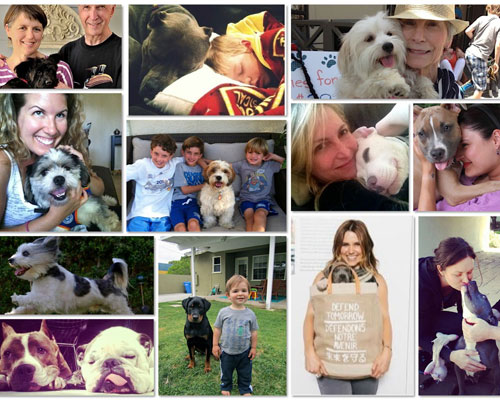
Study Reveals Negative Effects of Sterilization in Goldens and Labs
Dog neutering is a very popular practice in the United States. In doing so, people hope to avoid overpopulation or various unwanted behaviors. But is it a good choice for dogs, health-wise?
The UC Davis School of Veterinary Medicine conducted a study with hopes of determining whether or not neutering is detrimental to canine health, and chose Golden Retrievers and Labrador Retrievers as their subjects. The two breeds, which have been accepted worldwide as exemplary family pets and service dogs, are very similar in behavioral disposition, body size, and conformation, and were labeled as conducive to a comparative study.
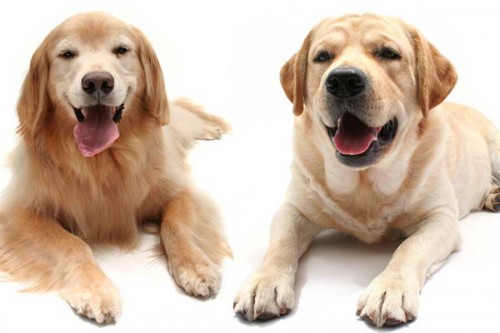
“…The incidence rates of both joint disorders and cancers at various neuter ages were much more pronounced in Golden Retrievers than in Labrador Retrievers,” notes Benjamin Hart, DVM, Ph.D., a distinguished professor emeritus in the School of Veterinary Medicine.
The long-term effects mentioned included joint disorders like hip dysplasia and cranial cruciate ligament tears, and cancers deemed “devastating”.
A connection was also found between early sterilization—before the animal is 6 months old—and the appearance of joint disorders. About 5 percent of intact Golden and Labrador Retrievers of both genders suffer from a joint disorder, the researchers determined. The rate in dogs sterilized before 6 months old jumped to 10 percent of Labs and 20 to 25 percent of Goldens.
The removal of hormone-producing organs during the first year of a dog’s life leaves the animals vulnerable to the delayed closure of long-bone growth plates, explains lead investigator Dr. Hart.
“We found in both breeds that neutering before the age of 6 months, which is common practice in the United States, significantly increased the occurrence of joint disorders, especially in the golden retrievers,” says Dr. Hart.
While neutering doubled joint disorders in Labradors, neutered Golden Retrievers saw their rate of joint disorder jump to four or five times that of Goldens that had not been neutered. Golden retrievers also saw a similar discrepancy in cancer rates, but with only female Goldens significantly affected. The study found that female Goldens that had been neutered had their risk of cancer rise three to four times that of non-neutered females.
The researchers did not take a stand on spaying and neutering, which is done to an estimated 83 percent of all U.S. dogs to control the pet population and prevent unwanted behaviors. Instead, they stated that the study served to measure the long-term health effects of sterilization and to educate breeders and dog owners who are deciding when, and if, to spay or neuter their animals.





